Motorcycle Investor mag
Subscribe to our free email news
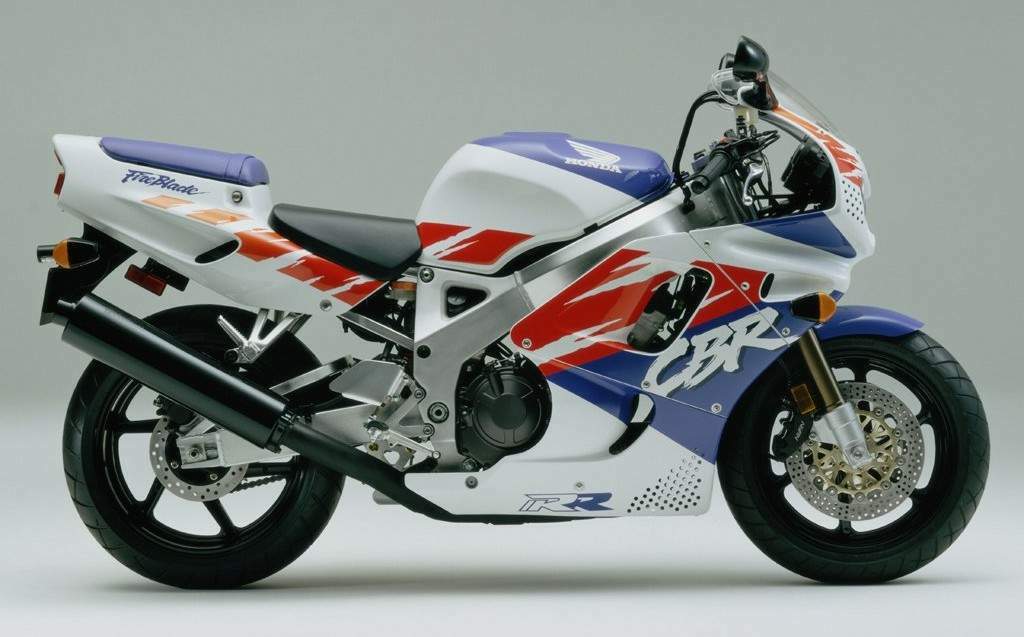
Future Collectible - 1992 Honda CBR900RR FireBlade
(updated Dec 2021)

Killer App
by Guy 'Guido' Allen
Honda’s first FireBlade marked a major step in
sportsbike development
When you take the time to look back over the history of the modern sportsbike, it’s not all that difficult to pick a short list of machines that have set the pace and direction over time.
At risk of setting off a major debate, the lineage runs something like this: 1968-on Honda CB750-4 for proving an electric start multi was not only possible but could deliver the goods; The Ducati 750 SS of 1972 for proving sports road bikes could actually look and feel like racers; The Suzuki GSX-R750 of 1984 for repackaging the multi into a bare-bones missile; And the 1992 Honda CBR900RR for presenting us with the prototype of the modern liquid-cooled litre-class weapon. We could keep going to the modern day, but you get the idea.
(Just as a matter of interest, the Ducati 916 and Yamaha R1 would be the next steps up this particular ladder.)
Something which distinguishes the FireBlade story is the near-legend status enjoyed by its ‘father’, Honda project leader and engineer Tadao Baba. A keen rider, he explained the genesis of the ’Blade to Visordown in 2009 (see link below): “Sportsbikes of the time were fast. Whoosh! (He mimes going in a straight line with his hands.) But sportsbikes were not fun in corners. No flick-flack! I wanted a bike to be fun to ride and more importantly, to go around the corners. I told people at the time this new bike would change the thinking for sportsbike design, that it would be fun both in corners and a straight line. Originally we started with a CBR750RR but we already had the VFR, so perhaps make it a 1000? No. We also had CBR1000F. Instead we saw that if we took the dimensions of a 750, use base motor but keep same bore and increase stroke it came to 893cc – so a new class was born, the 900 class.”
Kawasaki and others might take issue with the ‘invention’ of a new class, but there’s no denying Baba’s baby had cut a swathe through what was then the sports bike state of the art. By far the sharpest competitor at the time was Yamaha’s FZR1000. It was more powerful and a little quicker in a straight line, but was much bigger (55mm longer in the wheelbase), had more conservative steering angle and trail numbers (26.7 degrees/110mm versus 24/89) and weighed around 25 kilos more. The result? The Honda was a much sharper ride.
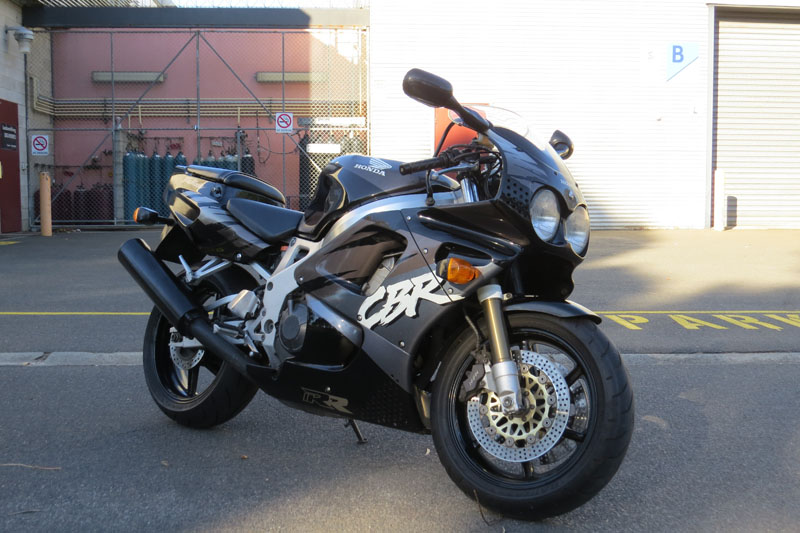
UNDER THE PAINT
So what makes a MkI FireBlade? The engineering really
concentrates on myriad details required for a major size
and weight-reduction program, though the overall package
is very conventional. The double-overhead-cam short-stroke
liquid-cooled four relies heavily on revs (max torque is
up at 10k) and is mated to a six-speed gearbox via the
usual wet multi-plate clutch.
Maintenance intervals are quite long: valve lash, which is via shim, is every 24,000km.
The frame is where a lot of emphasis has gone, with massive twin spars forming the basis. Good quality suspension by Showa graces both ends, with adjustability for ride height, plus compression and rebound damping. Honda stuck with a conventional fork, though a substantial one at 45mm.
Despite all the controversy surrounding 16-inch front wheels from the previous decade, Honda stuck one on the FireBlade, arguing it aided the quick steering effect it was after.
There was plenty of racer influence in the styling, with foam-mounted tacho and temp gauge, with an underslung speedo and warning light set. The front fairing was drilled with the distinctive FireBlade colander holes – a feature on the NSR grand prix bikes of the day – and sparked a debate over what they did, if anything.
That said, go trawling through the individual pieces that make up the design and you won’t find many surprises. It was the whole that was significant: the size of a 600 (and within a few kilos of Honda’s own CBR600F2) with the punch of a litre bike.

ON BOARD
Sit on a first-gen FireBlade today and it will feel
familiar and hardly ground-breaking. It was nevertheless a
pretty radical thing for its time, with the biggest
reservation that it was so responsive and steered so
damned fast.
It relied on its agility to make a mess of its opposition
on the racetrack – rather than brute force. That was
helped in no small measure by decent suspension and a set
of brakes that had good feel and power.
Today it still feels reasonably compact and lively. It’s typical Honda in many respects, with user-friendly manners and no real surprises when it comes to power or handling. Wring its throttle and it changes into something that will keep all but the most jaded horsepower hound reasonably happy. I wouldn’t feel disadvantaged in the company of current bikes, if it was a road ride.
Though the design is nearing 25 years old, time has treated it kindly. That’s down to having good fundamentals: light weight, decent power and a capable chassis. So it doesn’t feel as gothic as some of its contemporaries.
Complaints? None that are serious. The gearbox is okay but not as precise as some of its competitors. Do a few downshifts in rapid succession and you may find yourself unsure of where exactly you’ve ended up. While the ’Blade steering is not flighty by current standards, the 16-inch front wheel means you have very limited tyre choice. We’re told a 17-inch hoop from a VFR750F-V slots straight in, but you might strike an issue with speedo readings. If you make the swap, keep the original front wheel for any future restorer. Frankly, we'd leave it alone.
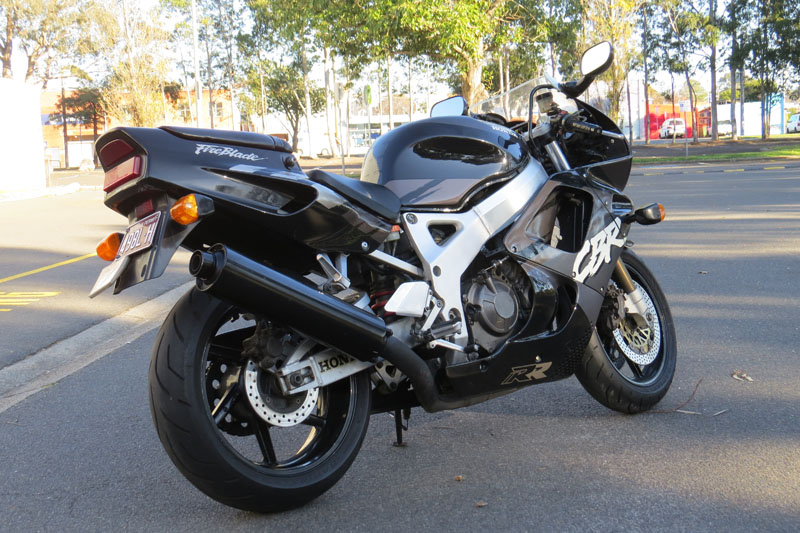
WHAT TO LOOK FOR
Typical of many Japanese bikes of the period, the
FireBlade is mechanically robust. Because they were the
performance bike equivalent of popcorn – hugely popular
and not very expensive – owners rarely if ever considered
they might one day be a collectible. So they inevitably
got thrashed, trashed and modified to within an inch of
their lives – often badly.
Thanks to that, good original bikes are scarce. But, because 95 per cent of buyers freak out when they see an odometer past the 50,000km mark, there is still the odd bargain out there.
A well cared-for example will easily pass the 100,000km mark without need of surgery. If it’s a high-miler that’s sounding a little rattly, there’s a good chance a new camchain and tensioner will be required. I’d be tempted to refresh the rings at the same time.
Arm yourself with some pictures of the original – there are plenty on the web – and go hunting for something that might have fluked a series of considerate owners over the years. That’s the other thing about sports bikes – they tend to get turned over quickly as owners feel compelled to swap it for the next shiny new thing.
Bodywork, decals and kit like the original muffler are getting hard to replace and will cause you the most grief if you’re heading down the restoration path. That means a good one is well worth paying a premium for.
Owners were valuing them at low to mid-teens, for a very good one, while a functional example can be had for less. However beware restoration costs, which could be significant. I reckon they’ve reached the bottom of their value cycle and are heading up.

If a first-gen bike is beyond your grasp, have a look at
the next series, which underwent several updates. The big
visual giveaway is the switch from two round headlamps to
the combined ‘fox eye’ units. Of that 1994-95 series, the
‘Tiger Blade’ colour scheme (above), with its distinctive
orange stripes, is the one to have.
See the Bikesales
story on buying 1990s classics
See the Classic Two Wheels period road test.
Video review
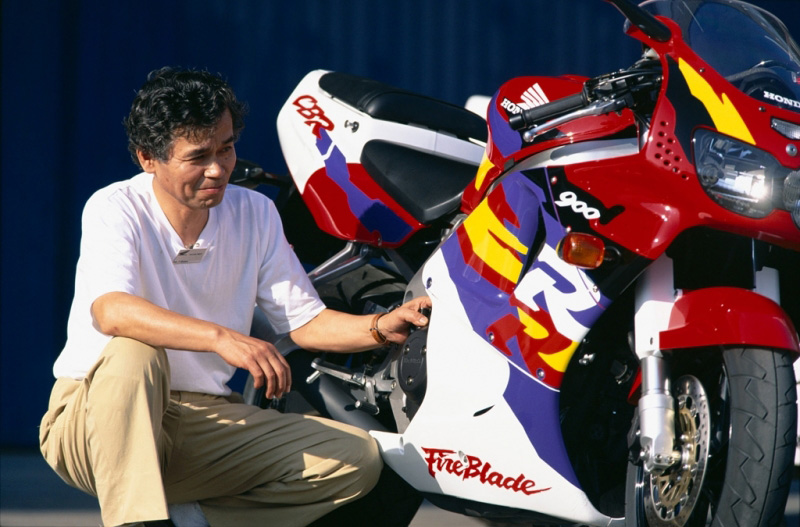
Talking with Baba san
Want to read more about Tadao Baba (above): Visordown interview

Proof they exist
The bike above is living proof there are still good ones
out there. A resident of our shed for several years, this
black and grey livery is somewhat rare in Australia
compared to the more popular blue/white/red option.
With a little over 65,000km on the clock, it felt
remarkably fresh, particularly in the engine department.
The real bonus is it was still a fun bike to ride.
All the cosmetics were there, though there were a few
signs of age, such as a little corrosion or the odd scuff
and paint chip.
We paid a little over the odds at the time, but it was
good value when compared to the cost of restoring one.
SPECS:
Honda CBR900RR 1992
ENGINE:
TYPE: Liquid-cooled, four-valves-per-cylinder, inline four
CAPACITY: 893cc
BORE & STROKE: 70 x 58mm
COMPRESSION RATIO: 11:1
FUEL SYSTEM: 4 x 38mm Keihin CV carburettors
TRANSMISSION:
TYPE: Six-speed, constant-mesh,
FINAL DRIVE: chain
CHASSIS & RUNNING GEAR:
FRAME TYPE: twin spar alloy
FRONT SUSPENSION: 45mm Showa forks, 120mm travel, full
adjustment
REAR SUSPENSION: Showa monoshock, 130mm travel, full
adjustment
FRONT BRAKE: 2 x 296mm discs with 4-piston Nissin calipers
REAR BRAKE: 220mm disc with 1-piston caliper
DIMENSIONS & CAPACITIES:
DRY/WET WEIGHT: 185/206KG
SEAT HEIGHT: 810mm
WHEELBASE: 1405mm
FUEL CAPACITY: 18L
WHEELS & TYRES:
FRONT: 16-inch cast alloy, 120/70-ZR16
REAR: 17-inch cast alloy, 180/55-ZR17
PERFORMANCE:
POWER: 93kW (125hp) @10,500rpm
TORQUE: 88Nm @ 10,000rpm
TOP SPEED: 265km/h
STANDING QUARTER: 10.3sec, 210km/h
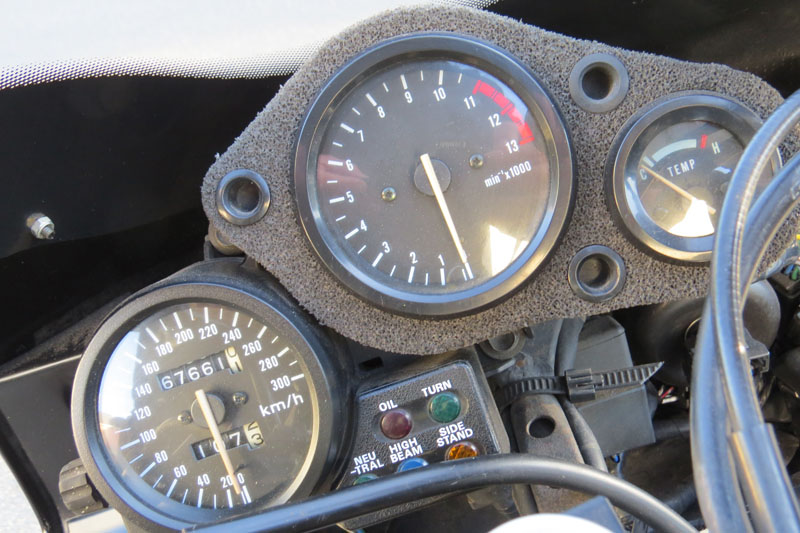

-------------------------------------------------
Produced by AllMoto abn 61 400 694 722
Privacy: we do not collect cookies or any other data.

Archives
Contact



